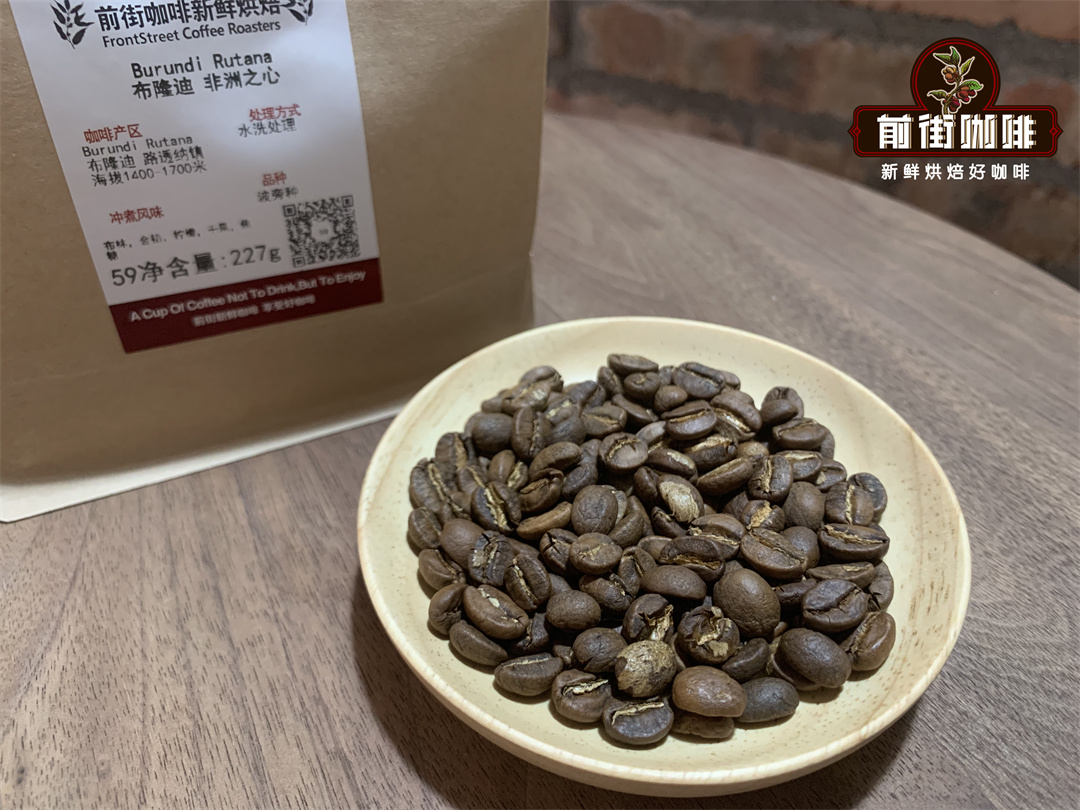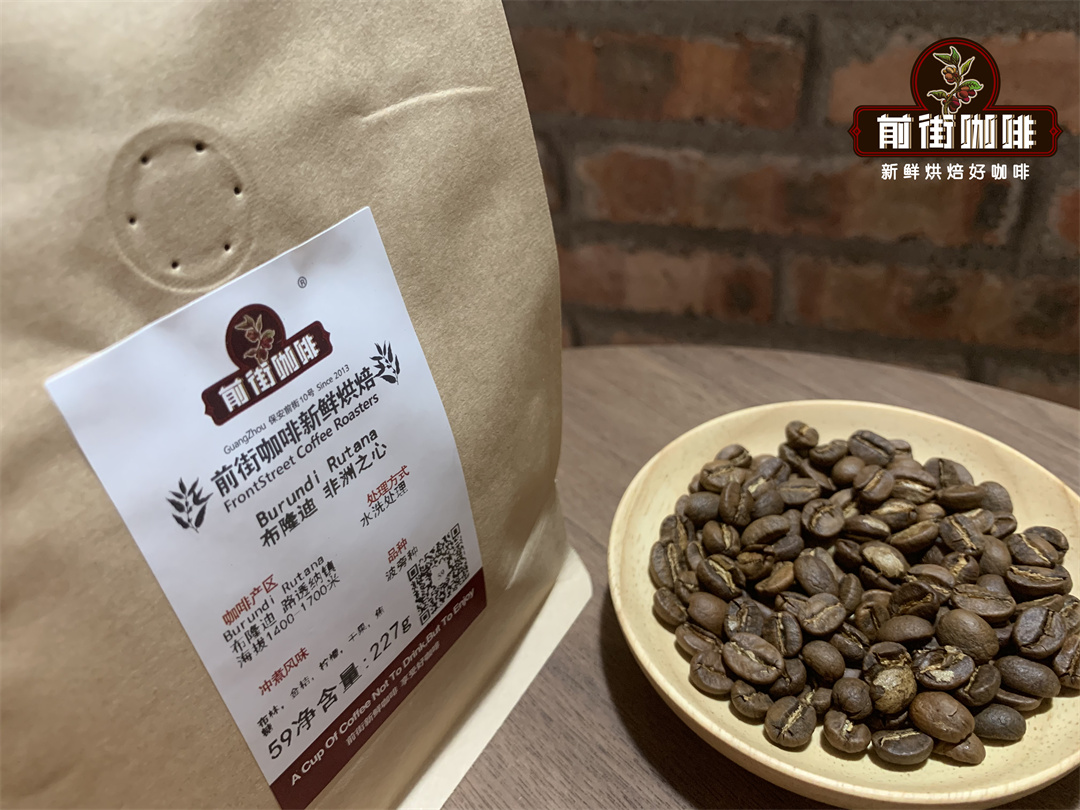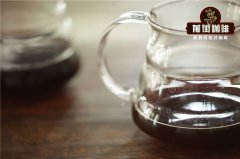Typical aroma and flavor descriptions of traditional Rwandan and Burundian coffee cups
Rwanda and Burundi are small landlocked countries located in the heart of the Great Lakes region of Africa. Although their specific histories are different, they have something in common in terms of coffee origin and society.
Both countries are small countries with problems in history, but the fine coffee they produce is very good and very interesting.
Both of them have high average growth altitude and excellent coffee soil.
Both have planted ancient and traditional tree species related to the highly respected bourbon varieties.
Both countries have a famous regional coffee stain-the notorious "potato defect", the obvious and unpleasant smell and taste of raw, germinated potatoes.
Both countries-along with neighbouring Uganda and the eastern Democratic Republic of the Congo-are suffering from ongoing political and economic competition and the resulting conflicts between the Hutu and Tutsi ethnic groups. the two groups share the same language and roughly the same culture, but are historically identified as different ethnic groups for economic and class reasons. The political and economic competition between the two has led to bloody conflicts that hinder both the development of high-end boutique coffee and the development of Rwanda.

Traditional Rwanda and Burundi Cup
The best specialties Rwanda and Burundi are almost always sweet and balanced (lively but not domineering in acidity; slightly syrup or smooth on the palate), fascinating and fascinating complexity, often with unusual and fascinating vanilla, vegetable or generally salty advice. Many Burundian and Rwandan coffees show the rich sweetness and spicy salty acidity of Kenyan coffee, but are more round and less intense than Kenyan coffee. The downside is that at the time of writing, some Rwandans have shown a flat tendency towards wood, which may be due to improper drying methods or delays in transportation from this landlocked country.
A typical aroma / flavor description. Sweet and quiet flowers (pronounced honey), drupes, ripe oranges (usually oranges), crisp roasted cocoa beans or cocoa, sometimes sweet and sour berries (blackcurrant or red currant), sometimes musk flowers, sometimes dark wood (oak), mahogany), occasionally with starchy, rhizomatous flavours.
Typical soil. High altitude.
Tree species
Most of the best Rwandan and Burundian coffee is produced by various local varieties of trees associated with ur- varieties in the Great Lakes region, France Mission Bourbon, a mutant selection of bourbon varieties, brought from the nearby island of Reunion (then Bourbon) to Tanzania in the end of the 19th century. Among these bourbon-related varieties, Jackson, Mibirizi and Mayaguez are the most common. Everyone seems to be able to show some version of bourbon, from plump, balanced sweetness to a more unique juxtaposition of sweetness and sour and spicy flavors.
Obviously, some common Latin American varieties-Caturra and Catuai---are also grown in Rwanda, but at the time of this writing, hybrids incorporating Robusta genetic materials are not an important factor in Rwanda or Burundi, and almost all exported coffee comes from tree-related types of local bourbon.

Traditional processing method
For boutique coffee, processing is carried out in a central wet mill or "washing station" operated by exporters or cooperatives, using variants of traditional fermentation and washing methods. These changes may include the two-stage fermentation and washing procedures commonly used in East and Central Africa, as well as final immersion in clean water to remove any final fruit residues. After the last soak, temporarily move the beans to a cool, elevated table for "dry skin".
The notorious defect of potatoes. During dry skin, workers hover over the table to remove beans that have been damaged by insects or left gaps in the skin removal process. Due to the prevalence of annoying "potato defects", this visual inspection of freshly washed coffee beans is particularly important in the Great Lakes region of Africa, which is a powerful local pollution. it is caused by bacteria invading the coffee fruit through the rupture of the fruit skin. Only when the endothelium of the bean is still moist and translucent can it be detected by visual inspection of the bean.
Newer non-traditional treatment methods. For now, the high-end specialty industries in Rwanda and Burundi seem to adopt to a large extent the best traditional fermentation and washing methods in Africa, although some new natural or dry processing methods (beans are dried) or honey processing (peeled but allow all or part of the pulp to be dried on beans) are entering the professional market.
Growth region
Burundi. Burundi is a small country, similar to Maryland. Coffee-growing areas are concentrated in the north-central part of the country, extending northward from the centre of the country to the Rwandan border (including Gitega, Karuzi, Kayanza, Kirundo, Muyinga and Ngozi provinces). Coffee is usually identified by province and by factory or washing station where they are produced.
Rwanda. It is a compact country where at least some coffee is grown almost everywhere. Rather than regions, boutique coffee is more likely to be affixed with names associated with specific wet mills or washing stations and their exporters (such as the famous Bufcafe) or co-operative wet grinders (Coopac Kabirizi). However, these names are regional in nature because wet mills extract coffee fruit only or mainly from the areas they serve. But the compactness and cohesion of production in Rwanda (similar varieties, processing methods, similar habitats) and the selectivity of importers seem to minimize regional differences. The list of cleaning stations and their location and altitude can be found on the websites of some raw coffee importers.
Coffee calendar and the best time to buy, brew and enjoy. Both Rwanda and Burundi are coffee from the southern hemisphere (harvested around March to July), so they have time to rest, transport, buy, sell and roast analysis, and they are theoretically the freshest from the roaster around November to May.
Important Notice :
前街咖啡 FrontStreet Coffee has moved to new addredd:
FrontStreet Coffee Address: 315,Donghua East Road,GuangZhou
Tel:020 38364473
- Prev

What is coffee? Is coffee healthy for your heart?
Hand-brewed coffee brewed through filter paper enhances heart benefits over French Press or espresso Coffee is a healthy drink and is even healthier if brewed with filter paper. Researchers in Norway collected health data on 508,747 men and women aged 20 to 79, and followed them on average.
- Next

The difference between American coffee and espresso espresso is espresso
American coffee is a kind of espresso, which is formed by espresso plus hot water. Espresso refers to all the modified coffee drinks based on espresso (Espresso) made by espresso machines. The origin of American coffee is related to Americans. The United States is a country of immigrants, formed by the migration of people from many countries to what is now the United States. So,
Related
- Beginners will see the "Coffee pull flower" guide!
- What is the difference between ice blog purified milk and ordinary milk coffee?
- Why is the Philippines the largest producer of crops in Liberia?
- For coffee extraction, should the fine powder be retained?
- How does extracted espresso fill pressed powder? How much strength does it take to press the powder?
- How to make jasmine cold extract coffee? Is the jasmine + latte good?
- Will this little toy really make the coffee taste better? How does Lily Drip affect coffee extraction?
- Will the action of slapping the filter cup also affect coffee extraction?
- What's the difference between powder-to-water ratio and powder-to-liquid ratio?
- What is the Ethiopian local species? What does it have to do with Heirloom native species?

